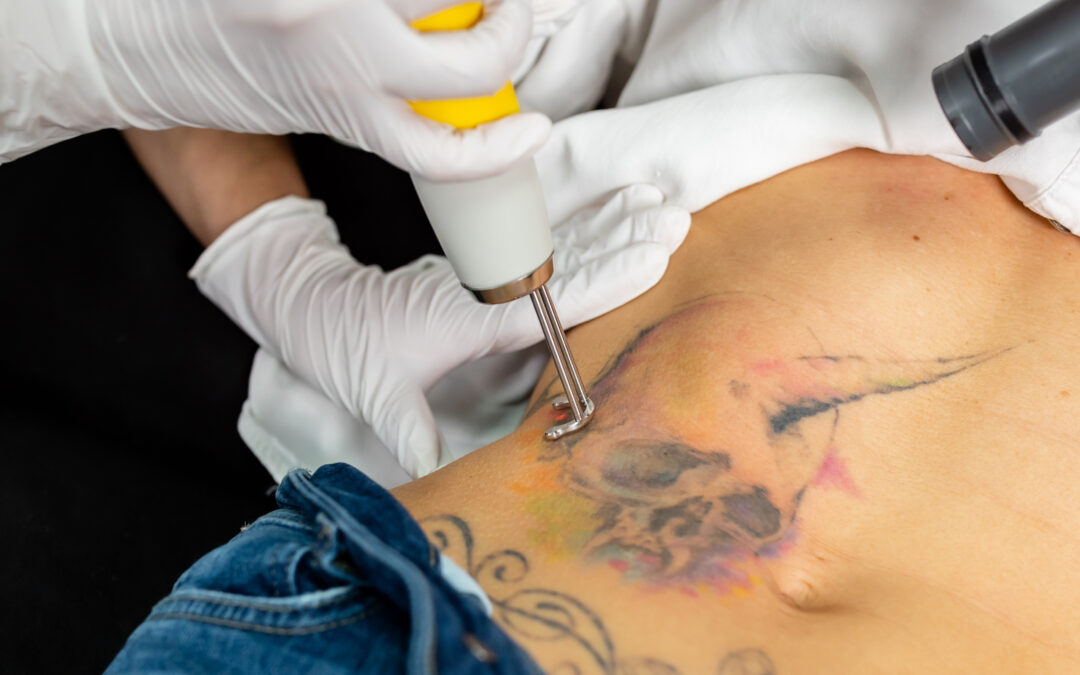Introduction:
The number one question surrounding tattoo removal is often, “How many treatments will I need?” Unfortunately, a quick one-size-fits-all answer is elusive due to the myriad variables involved. This blog post aims to delve into the intricate aspects of tattoo removal, explaining the process, factors influencing treatment numbers, and what to expect during this transformative journey.
Understanding Tattoo Formation and Removal:
Tattoos become permanent when specialized needles puncture the outer layer of skin (epidermis) and deposit ink into the second layer (dermis). While the epidermis regenerates, the stable dermis makes tattoos permanent. Laser tattoo removal utilizes pulses of light energy to reach the dermis, heating and breaking down ink particles, which are then flushed out by the body’s immune system.
Average Number of Treatments:
The average number of treatments for complete tattoo removal typically ranges from 6 to 10, though it can exceed 10 based on various factors. Factors influencing the treatment count include the size, ink colors, location, age, and the type of tattoo.
Factors Affecting Treatment Numbers:
Size:
- Larger tattoos usually require more treatments, as the laser needs to cover a larger area. This can vary from small, regrettable initials to extensive multicolored sleeves.
Ink Colors:
- Different colors respond differently to laser pulses. Blacks and dark grays are easier to remove, while neons, light blues, and light greens can be more stubborn.
Location of the Tattoo:
- Tattoos on fatty tissues close to the heart are generally removed more quickly than those on bonier areas, thanks to increased circulation and immune system activity.
Skin Type:
- Lighter skin absorbs less laser light than darker skin, requiring more treatments for effective removal. Skin type, categorized on the Fitzpatrick scale, plays a role in treatment numbers.
Age of Tattoo:
- Older tattoos often require fewer treatments, as the immune system gradually absorbs and disperses ink over time. Faded tattoos may take fewer treatments due to the reduced ink molecules.
Layering and Cover-ups:
- Tattoos with layers or cover-ups necessitate more treatments. Vibrant touch-ups or transforming an original tattoo into something else (cover-up) involves additional ink and, consequently, more treatments.
Immune System and Health:
- A healthy immune system expels ink particles efficiently, affecting the speed of tattoo removal. Factors such as sickness, smoking, exercise, sleep, diet, alcohol, and medications can influence the immune system.
Scarring:
- Tattoos causing scarring can complicate removal, making it more challenging to achieve desired results.
Estimating Treatment Numbers:
Precisely predicting the number of treatments is challenging due to the variables. A laser tattoo removal consultation can provide an estimate. Amateur tattoos may require 3 to 7 treatments, while professional tattoos with harder inks may need 8 to 20 treatments. Some tattoos may even surpass 20 treatments.
Conclusion:
Embarking on a tattoo removal journey involves understanding the complexities of the process and managing expectations. Factors like size, ink colors, skin type, and overall health contribute to the varied number of treatments required. By addressing these considerations, individuals can approach the transformative process with realistic expectations and make informed decisions.
